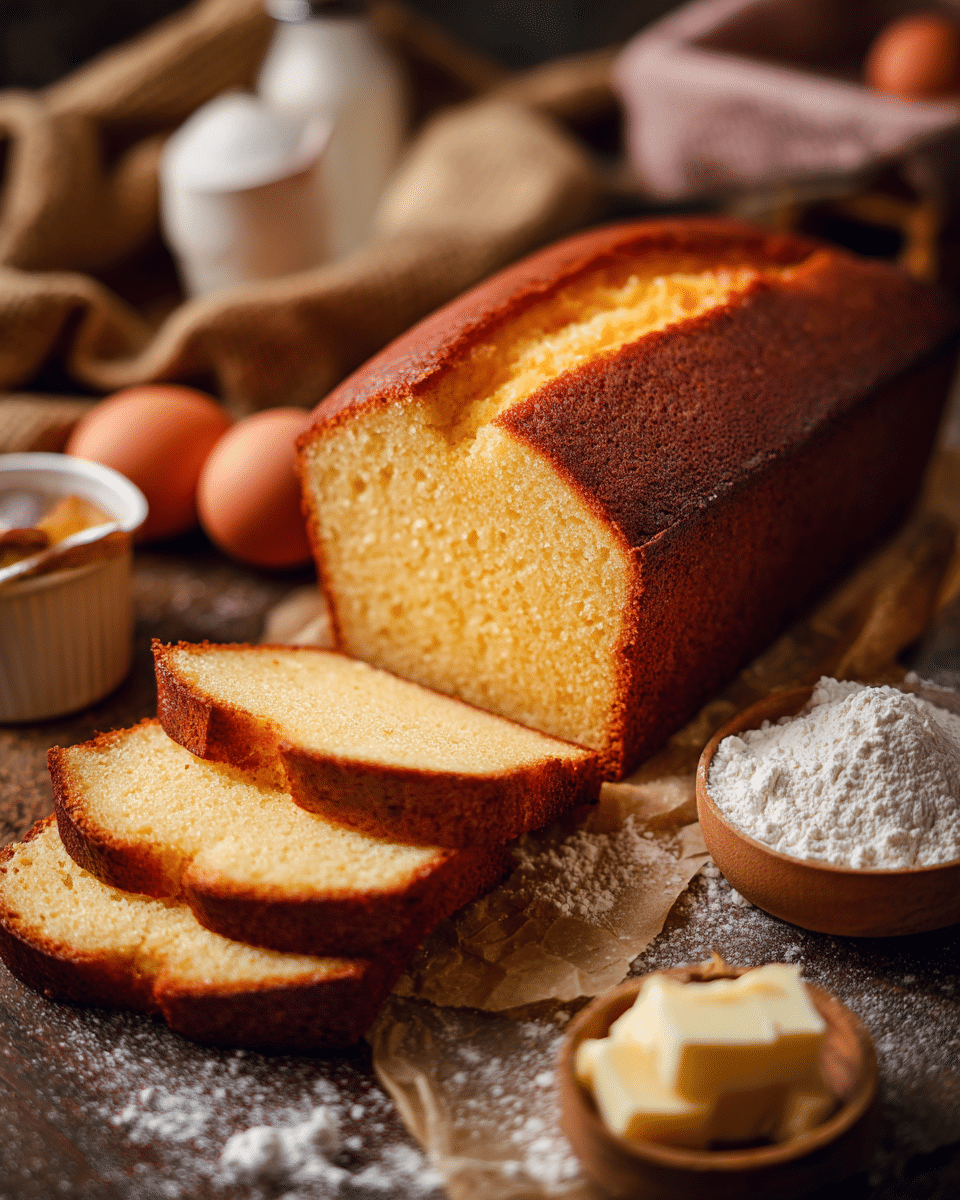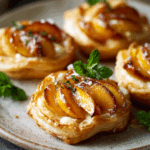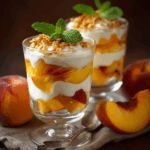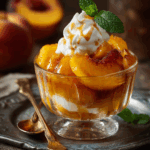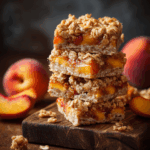This buttery vanilla pound cake is a classic, cherished recipe passed down through generations. Known for its dense yet tender crumb, rich vanilla aroma, and buttery flavor, it’s perfect for any occasion—from afternoon tea to holiday celebrations. Simple yet elegant, this pound cake is a nostalgic treat that never goes out of style.
FULL RECIPE
Ingredients
- 1 cup (227g) unsalted butter, softened
- 1 ½ cups (300g) granulated sugar
- 4 large eggs, room temperature
- 2 cups (250g) all-purpose flour
- 1 teaspoon baking powder
- ¼ teaspoon salt
- ½ cup (120ml) whole milk, room temperature
- 2 teaspoons pure vanilla extract
Directions
- Preheat the oven to 350°F (175°C). Grease and flour a 9×5-inch loaf pan or line it with parchment paper.
- In a large bowl, cream the softened butter and sugar together using an electric mixer until light and fluffy, about 4-5 minutes.
- Add the eggs one at a time, beating well after each addition to incorporate fully.
- In a separate bowl, whisk together the flour, baking powder, and salt.
- Gradually add the dry ingredients to the butter mixture, alternating with the milk, beginning and ending with the flour mixture. Mix just until combined.
- Stir in the vanilla extract until evenly distributed.
- Pour the batter into the prepared loaf pan and smooth the top with a spatula.
- Bake for 60-70 minutes or until a toothpick inserted in the center comes out clean.
- Remove the cake from the oven and allow it to cool in the pan for 10 minutes before transferring it to a wire rack to cool completely.
Nutrition Facts
- Calories: 350
- Total Fat: 18g
- Saturated Fat: 11g
- Cholesterol: 110mg
- Sodium: 150mg
- Total Carbohydrates: 42g
- Dietary Fiber: 1g
- Sugars: 25g
- Protein: 5g
History and Tradition of Pound Cake
The buttery vanilla pound cake is one of the oldest cake recipes, traditionally named for its original proportions: a pound each of butter, sugar, eggs, and flour. This simple formula dates back centuries and has been a beloved staple in many households, often passed down through generations. Its timeless appeal lies in its rich texture and subtle vanilla flavor, evoking nostalgia and family gatherings. The recipe is often associated with Southern baking traditions in the United States, where it remains a classic dessert for holidays and celebrations.
The Science Behind the Perfect Pound Cake Texture
Achieving the perfect dense yet tender crumb of a pound cake involves careful balancing of ingredients and technique. Creaming the butter and sugar properly incorporates air, giving the cake a lightness despite its rich base. The ratio of fat to flour creates a moist texture, while baking powder adds just enough lift to prevent heaviness. Using room temperature ingredients and folding in flour gently also helps maintain the cake’s structure. The result is a cake that is firm enough to slice neatly but melts softly on the palate.
Health Considerations and Nutritional Profile
While irresistibly delicious, this pound cake is a rich dessert with a relatively high calorie and fat content due to the generous amounts of butter and sugar. It provides moderate protein from eggs and some calcium from milk but should be enjoyed in moderation as part of a balanced diet. For those mindful of nutrition, smaller portion sizes or pairing the cake with fresh fruit can help balance indulgence with health. Substitutions like reduced-fat dairy or alternative sweeteners can alter the nutritional profile but may affect the traditional flavor and texture.
Variations to Customize Your Pound Cake
This classic recipe lends itself well to numerous delicious variations. Adding citrus zest, such as lemon or orange, brightens the flavor and adds a fresh aroma. Incorporating mix-ins like fresh berries, chocolate chips, or nuts can introduce texture and visual appeal. For a more decadent twist, swirl in caramel or raspberry sauce before baking. You can also experiment with extracts, using almond or coconut for a unique spin. These adaptations allow you to make the recipe your own while preserving the cake’s classic buttery base.
Serving Suggestions and Presentation Ideas
Pound cake is incredibly versatile when it comes to serving. It can be enjoyed plain with a cup of tea or coffee for a simple treat or dressed up for special occasions. Top slices with whipped cream and fresh berries for an elegant dessert, or drizzle warm chocolate or caramel sauce for extra indulgence. Pound cake also works beautifully as a base for trifles or layered with ice cream for a quick summer dessert. Light dustings of powdered sugar or a glaze can add visual appeal and enhance sweetness.
Perfect Pairings to Enhance Flavor
Pairing your buttery vanilla pound cake with complementary flavors elevates the eating experience. Fresh fruit like strawberries, blueberries, or peaches adds juiciness and natural sweetness that balances the cake’s richness. A scoop of vanilla or cinnamon ice cream introduces creaminess and coolness. For adults, a glass of dessert wine, coffee, or tea complements the cake’s vanilla notes. The simplicity of the pound cake makes it a blank canvas to showcase various accompaniments, making it suitable for different occasions.
Tips for Baking Success
Success with pound cake requires attention to detail, especially in measuring ingredients accurately and mixing properly. Using room temperature butter, eggs, and milk ensures even incorporation and smooth batter. Avoid overmixing once the flour is added to prevent a tough texture. Preparing the pan correctly with grease and flour or parchment paper helps the cake release easily after baking. Checking for doneness with a toothpick near the end of baking time avoids under or overcooking, preserving moistness and crumb.
Storage and Shelf Life
Proper storage is essential to maintain the freshness and texture of pound cake. Once cooled completely, wrap the cake tightly in plastic wrap or store it in an airtight container to prevent drying out. Pound cake keeps well at room temperature for up to 3 days. For longer storage, it can be frozen for up to 3 months; wrap it well in foil and place it in a freezer bag. To serve after freezing, thaw at room temperature and optionally warm slightly in the oven to revive its moist texture.
Using Pound Cake in Creative Recipes
Beyond enjoying pound cake on its own, it can be incorporated into a variety of creative recipes. It serves as an excellent base for bread puddings, adding buttery richness to the custard dessert. Cubed pound cake can be toasted and used as a crunchy topping for parfaits or fruit salads. It can also be sliced and used as layers in cakes or trifles. Some bakers transform leftover pound cake into cake pops or French toast, making it a versatile ingredient in the kitchen.
Advertisement
Cultural Significance and Modern Popularity
Pound cake continues to be a cultural icon in baking, symbolizing comfort and tradition. Despite evolving dessert trends, its straightforward recipe and familiar flavors keep it relevant in modern kitchens. It is often featured in baking contests, cookbooks, and social media for its timeless appeal. Many bakers appreciate its simplicity and the nostalgic connection it fosters. This cake’s enduring popularity reflects how classic recipes can maintain their place on contemporary tables while inspiring new culinary creativity.
Conclusion
The buttery vanilla pound cake is a beloved classic that combines simplicity, rich flavor, and versatility. Rooted in history and tradition, it continues to delight generations with its moist texture and comforting vanilla aroma. Whether enjoyed plain or with creative twists, this timeless recipe offers a satisfying treat that fits any occasion. With thoughtful baking tips, serving ideas, and storage advice, the pound cake remains a kitchen staple that brings warmth and sweetness to every table.

